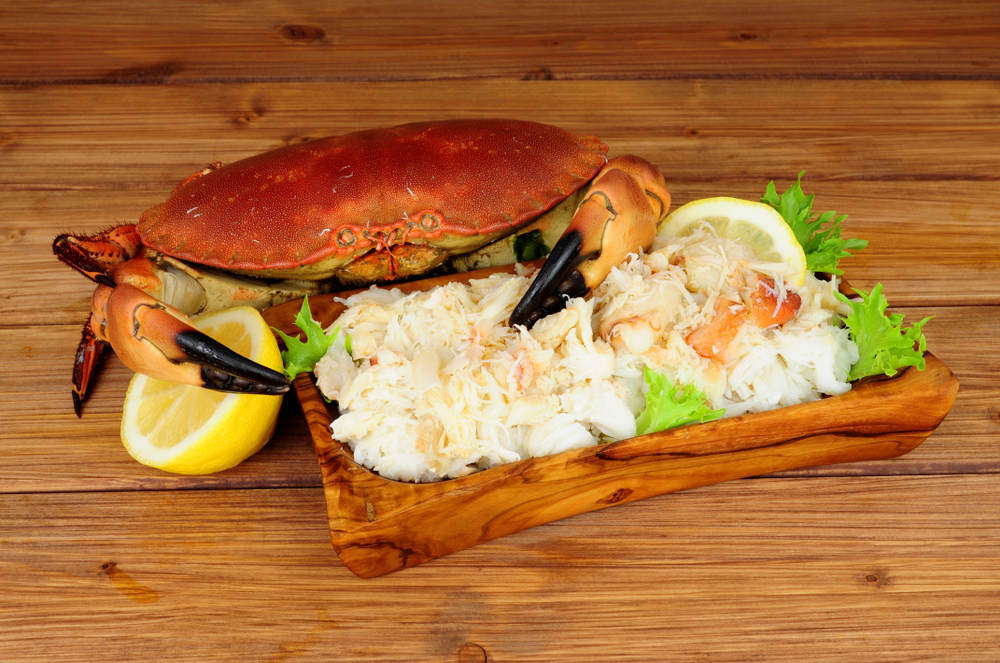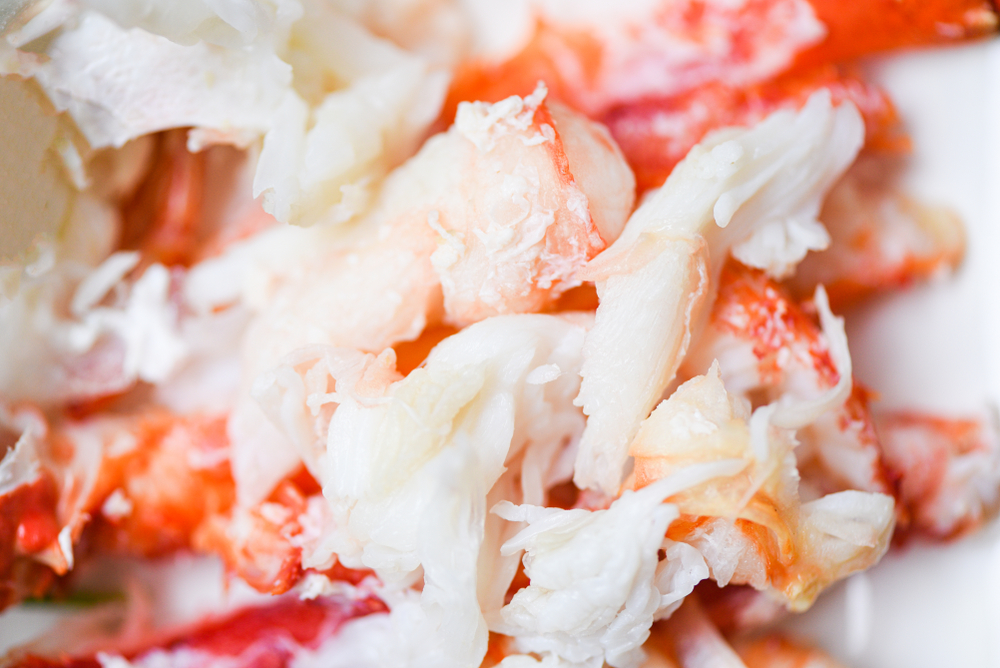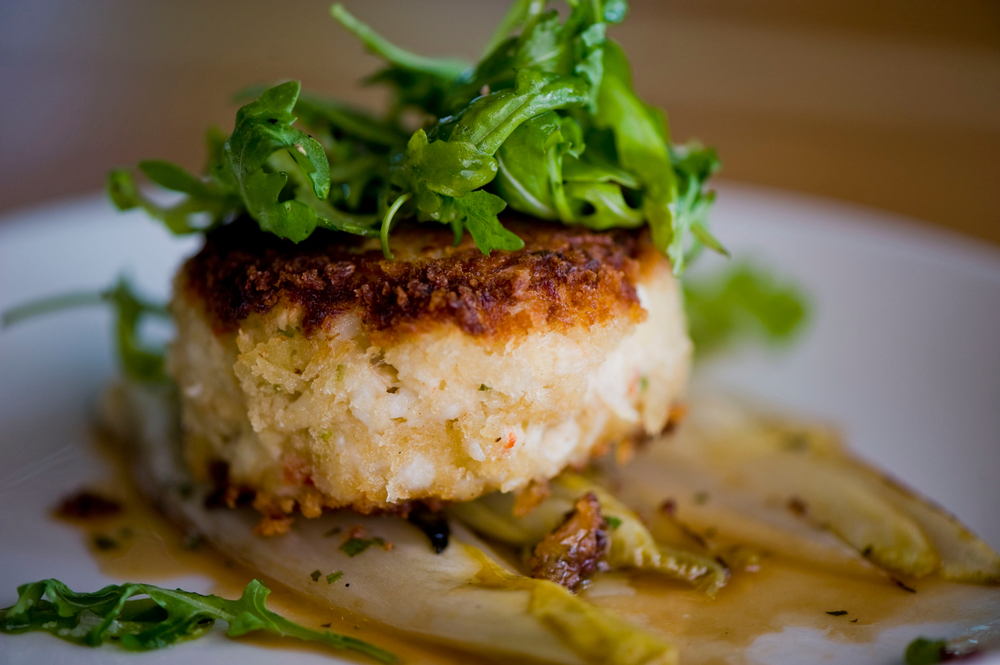California rolls, a popular type of sushi, are a delicious and convenient option for a quick meal or snack. Made with a combination of rice, seaweed, imitation crab, cucumber, and avocado, sushi lovers often wonder how long California rolls can safely sit out before being consumed.
There are several factors to consider, including the freshness of the ingredients, the preparation process, and the storage conditions.
One crucial aspect of sushi consumption is the importance of freshness, as both the taste and safety of sushi can be compromised if it sits out for too long.
The potential health risks of unrefrigerated sushi should be taken seriously. Understanding the guidelines for properly handling and storing California rolls can help ensure that these tasty bites remain safe and enjoyable to eat.
Key Takeaways
- Freshness is crucial for the safety and taste of California rolls
- Unrefrigerated sushi can pose potential health risks
- Proper handling and storage guidelines are important for safe sushi consumption
Understanding California Roll

The California roll is a popular type of sushi that originated in the United States. It is a type of maki, which is a traditional Japanese sushi roll made by rolling sushi ingredients with a bamboo mat.
The California roll is unique because it has a distinct combination of flavors and textures that make it appealing to both sushi enthusiasts and newcomers alike.
At its core, the California roll consists of crab, avocado, and cucumber wrapped in sushi rice and nori, which is a type of dried seaweed. Traditionally, real crab is used in the roll, but in many instances, it is replaced with more affordable imitation crab.
The roll is often garnished with a drizzle of American mayonnaise and a sprinkling of toasted sesame seeds, enhancing its flavor profile.
Although sushi has been a staple in Japanese cuisine for centuries, the California roll has a more recent history. It is believed to have been created in Los Angeles, California, in the 1960s.
Due to its Western origin and the use of ingredients like crab and avocado, the California roll is often considered a significant departure from traditional Japanese sushi.
In Japan, maki rolls are typically wrapped with the nori on the outside; however, the California roll is an example of an “inside-out” makizushi, where the rice is on the outside, and the nori is on the inside with the filling.
This reverse style has become increasingly popular in the U.S, with many American sushi restaurants offering various modifications and reinterpretations of traditional sushi rolls.
In conclusion, the California roll is a unique and delectable sushi option with a rich history rooted in the fusion of Japanese and American flavors.
As a result, it has gained widespread popularity and recognition, acting as a delicious gateway for those exploring the world of sushi.
Ingredients of California Roll
Main Ingredients
The key components of a California roll include rice, avocado, cucumber, and crab meat. The rice used for this sushi roll is typically sushi rice – a short-grain variety that has a sticky consistency due to its high starch content. This rice is seasoned with rice vinegar, sugar, and salt to achieve the desired flavor.
The standard filling for a California roll consists of avocado and cucumber slices, providing a fresh and creamy taste. The star of the roll, however, is the crab meat.
While many recipes use real crab meat, it’s more common to find surimi or imitation crab in California rolls, as it’s a more accessible and cost-effective option.
Additional Flavor Enhancers
To elevate the taste and presentation of the California roll, several ingredients can be added. One popular addition is a thin layer of mayonnaise, which enhances the richness and creaminess of the roll.
Additionally, sesame seeds can be sprinkled on the rice or the outer layer of the roll, adding texture and nutty flavor.
For those who prefer a more robust taste, tuna can be incorporated into the roll as an alternative or an addition to the crab meat. Seafood lovers can also opt for a topping of fish roe, such as masago or tobiko, to lend a unique burst of oceanic flavor.
These additions contribute to creating a diverse and exciting California roll experience.
The Importance of Freshness

The freshness of California rolls plays a vital role, not only in their taste but also in terms of food safety. As one of the most popular styles of sushi, the demand for these delightfully crunchy rolls is high, making it essential that they be prepared and consumed as fresh as possible.
Maintaining freshness is particularly crucial with sushi, given that it often contains raw fish and other perishable ingredients.
When these items are not kept at the appropriate temperature or allowed to sit out for extended periods, serious health risks can arise, including foodborne illnesses due to bacterial growth.
By prioritizing the freshness of a California roll, both consumers and restaurant establishments can enhance the overall sushi experience.
A fresh California roll offers the best of what sushi has to offer, characterized by well-balanced flavors, a satisfying texture and, of course, that appealing crunch.
In contrast, a stale or improperly stored roll may not only pose health risks but fail to deliver on the sensory experience that sushi fans have come to know and love.
Achieving appropriate freshness requires careful attention to sourcing high-quality ingredients, mastering proper sushi preparation techniques, and following rigorous storage protocols.
When these practices are upheld, fans of California rolls can safely enjoy this delicious sushi variety with the assured confidence of knowing they are consuming a product that adheres to the highest standards of quality, taste, and food safety.
Storing California Rolls
When it comes to storing California rolls, there are a couple of effective methods to ensure they remain fresh and delicious. The two most common storage methods are refrigerating and freezing.
Refrigerating California Rolls
Refrigerating California rolls is ideal when they will be consumed within a short period. To store them in the fridge, follow these steps:
- Place the rolls in an airtight container to prevent any external contaminants and to maintain optimal freshness.
- Before sealing the container, it is advised to cover the rolls with plastic wrap. This extra layer minimizes the exposure to air, helping to avoid drying out the rolls.
- Put the container in a designated area within the fridge, preferably away from strong-smelling foods as they can affect the taste of the rolls.
- Store the California rolls at 40°F (4°C) or below, as this is the recommended temperature for refrigeration.
| Storage Method | Timeframe for Freshness |
|---|---|
| Refrigeration | 1-2 days |
Frozen California Rolls
For longer-term storage, freezing is a practical option. Here’s how to freeze California rolls:
- Wrap each individual roll in a layer of plastic wrap to protect it from freezer burn and to preserve its taste and texture.
- Place the wrapped rolls in an airtight container or heavy-duty freezer bag.
- Label the container or bag with the date to ensure proper food rotation.
- Store the California rolls in a freezer at 0°F (-18°C) or below.
| Storage Method | Timeframe for Freshness |
|---|---|
| Freezing | Up to a month |
Remember that proper storing techniques are crucial in maintaining the quality and freshness of California rolls. Make sure to keep them chilled or frozen until they are ready to be enjoyed.
Potential Health Risks of Unrefrigerated Sushi

Sushi, specifically California rolls, left unrefrigerated for long periods may pose a health risk due to the growth of harmful bacteria and parasites.
When sushi sits at room temperature, it enters the danger zone, which is a temperature range between 40°F and 140°F where bacteria and other contaminants grow rapidly.
One of the major concerns for unrefrigerated sushi is the raw fish content. Consuming raw fish that has been at room temperature for an extended period may result in food poisoning.
Even though California rolls typically contain cooked crab or imitation crab, other ingredients like cucumbers or avocados may still be contaminated if left out for too long.
There are several types of bacteria that can cause foodborne illness, such as Salmonella and various parasites. These microorganisms thrive in environments where there is moisture and a warm temperature.
Sushi, being a combination of rice, fish, and other moist ingredients, can easily become a breeding ground for bacteria if not stored properly.
When sushi is prepared, it may come in contact with surfaces or utensils that are contaminated, thus increasing the risk of foodborne illness. Therefore, it is crucial to practice proper food safety measures during preparation and storage.
If you are unsure whether the sushi has been left out for an unsafe period, the touch test can provide an indication. Sushi that is still safe to eat should be firm and cool to the touch.
To reduce the potential health risks associated with unrefrigerated sushi, it is recommended to consume it within two hours of preparation or purchase if stored at room temperature.
For longer storage, the sushi should be placed in a refrigerator, maintaining a temperature below 40°F.
This will help slow down the growth of harmful bacteria and ensure that your sushi remains safe and enjoyable to eat.
How To Tell If Sushi Is Bad
When dealing with sushi, especially California rolls, it’s essential to be able to identify when it has gone bad. Due to the ingredients used, sushi has a short shelf life and should not sit out for long periods.
Here are a few reliable indicators that will help you determine if your sushi is no longer good to consume.
1. Smell: A strong, unpleasant odor is one of the most obvious signs that sushi has gone bad. Fresh sushi usually has a mild scent, if any at all.
If you notice any potent, off-smelling odor coming from your leftover sushi, it is best to discard it immediately.
2. Appearance: Over time, the color and texture of sushi can change, indicating that it is no longer safe to eat. Cooked fish in sushi rolls may darken or become slimy, while raw fish may turn slightly translucent.
It’s essential to thoroughly inspect the sushi before consuming it, and if in doubt, it is wise not to eat it.
3. Taste: If you’re still unsure, taking a small taste of the sushi can help you determine if it has gone bad. Fresh sushi should have a clean taste, while bad sushi will have a sour or rancid flavor.
Be cautious, though – only taste a small amount, as consuming spoiled food can lead to food poisoning.
To prevent sushi from turning bad, remember not to leave it out for more than a couple of hours. Since sushi is best enjoyed fresh, try to consume it as soon as possible after purchase.
If you must store leftover sushi, keep it in a tightly sealed container in the refrigerator, and consume it within a day. By following these guidelines, you can ensure that your sushi remains fresh, delicious, and safe to eat.
Handling Leftover Sushi
Reheating Sushi
When it comes to leftover California rolls, it is important to safely handle and consume them. Reheating sushi is not recommended as it can compromise the quality and taste of the dish.
Ideally, leftover sushi should be consumed within 24 hours to ensure it is still safe for consumption.
If you must reheat your leftover sushi, it is best to separate the fish or cooked ingredients from the sushi rice.
Gently warm the fish or cooked ingredients in the microwave on low power for a few seconds, while the rice can be reheated in a steamer or with a damp towel to retain its moisture.
However, always ensure that the food is warmed to at least 165°F (74°C).
How to Keep Sushi Fresh Overnight
To keep sushi fresh overnight, follow these tips:
- Temperature Control: Store leftover sushi in a refrigerator at a temperature between 35°F (1.6°C) and 40°F (4.4°C) to slow down bacterial growth and maintain the sushi’s freshness.
- Separate Components: If possible, separate the components of the sushi roll. Store raw fish, cooked ingredients, and rice separately in airtight containers to prevent them from affecting each other’s taste and texture.
- Avoid Freezing: Freezing sushi is not recommended, as it destroys the texture of both the fish and rice. However, if there is no other option, wrap the sushi tightly with plastic wrap and store it in a freezer-safe container.
- Moisture Management: To maintain the proper texture of sushi rice, place a damp paper towel over the rice before sealing it in an airtight container. This helps retain the moisture and prevents the rice from becoming too hard.
Remember that keeping sushi fresh overnight does not guarantee safety for consumption. Always be cautious and use your best judgment when deciding to consume leftover sushi, especially with raw fish.
California Rolls in Restaurants and Grocery Stores

California rolls, a popular type of sushi roll, are typically made with rice, cucumber, imitation crab, and avocado. As with any perishable food item, it’s important to be mindful of how long they can safely sit out at room temperature.
In restaurants, California rolls are typically prepared fresh and served to customers promptly. They are usually kept in a cool environment, such as a refrigerated sushi case, to maintain freshness and ensure safety.
Most restaurants have strict guidelines in place for food handling and temperature control, so the risk of consuming unsafe sushi in these establishments is minimal.
On the other hand, grocery stores that sell California rolls often display them in a refrigerated section or on a chilled serving tray. These rolls may have been packaged and kept cold for a longer period of time, compared to those prepared at a restaurant.
While grocery stores are required to follow food safety regulations, it’s essential to check the expiration date and ensure that the sushi rolls have been kept at an appropriate temperature.
When purchasing California rolls from a grocery store, consider the following tips:
- Examine the packaging for any signs of damage or leakage.
- Make sure the sushi rolls are well within their expiration date.
- Check that the serving tray at the store is adequately chilled.
To maintain the quality and safety of sushi rolls at home, it is advised to refrigerate them as soon as possible. Generally, California rolls can last for about 24 hours in the refrigerator, but it’s best to consume them as soon as you can.
When storing California rolls, place them in an airtight container to prevent any moisture or odors from affecting their taste and quality.
In conclusion, California rolls can be safely enjoyed at both restaurants and grocery stores, provided they have been handled and stored correctly.
Proper food handling and storage practices are crucial to minimizing the risk of foodborne illnesses and ensuring a delicious sushi experience.
Related post: How Long Can Sushi Sit Out For
Frequently Asked Questions About Sushi Storage
When it comes to storing sushi, such as California rolls, there are common questions people usually ask. It’s essential to be cautious with perishable foods to avoid spoilage and foodborne illnesses.
This section aims to answer some of these frequently asked questions.
1. How long can California rolls sit out?
California rolls, just like any other sushi, should not be left out at room temperature for more than 2 hours. If the environmental temperature is above 90°F (32°C), then the safe time is reduced to 1 hour.
2. How long can sushi sit out?
The general rule for any sushi is the same as for California rolls – no longer than 2 hours at room temperature, or 1 hour if the temperature is above 90°F.
3. How long do California rolls last in the fridge?
Properly stored, California rolls can last in the refrigerator for up to 24 hours. It’s best to store them in an airtight container to preserve freshness and taste.
| Storage Methods | Shelf Life |
|---|---|
| Room Temperature | 2 hours |
| Fridge | 24 hours |
4. How to identify spoilage in California rolls?
Spoilage signs in California rolls (or any sushi) include noticeable off-odor, slimy texture, and/or mold growth. If any of these signs are present, it’s safer not to consume the sushi.
5. What precautions can I take when handling perishable foods like sushi?
- Always wash your hands before handling sushi or any perishable foods.
- Avoid cross-contamination by using separate cutting boards and utensils for raw fish.
- Ensure proper storage of sushi, keeping it refrigerated whenever possible.
- Discard sushi that has been left out for an extended period, as it may no longer be safe to consume.
Frequently Asked Questions
How long do unrefrigerated California rolls last?
Unrefrigerated California rolls can last for about an hour at room temperature. It’s crucial to consume them within this time frame, as leaving sushi out for extended periods can lead to spoilage and increase the risk of foodborne illnesses.
Can overnight sushi be eaten safely?
It’s generally not recommended to eat sushi that has been left out overnight. Sushi contains raw fish and delicate ingredients that can easily spoil and harbor harmful bacteria.
To be safe, always refrigerate sushi soon after it’s prepared and consume it within 24 hours.
What’s the shelf life of vegetarian sushi?
Vegetarian sushi has a slightly longer shelf life than sushi made with raw fish. However, it’s still important to refrigerate it promptly and consume it within 24 to 48 hours.
The perishable nature of the rice, vegetables, and seaweed can still lead to spoilage if left out too long or not adequately refrigerated.
How to determine if sushi has gone bad?
To check if sushi has gone bad, look for any off-putting smells, slimy texture, or changes in appearance which may indicate spoilage. If you have any doubts or concerns, it’s best to err on the side of caution and discard the sushi.
What is the fridge life of tuna sushi?
Tuna sushi should be consumed within 24 hours of preparation when stored in the refrigerator. This is due to the perishable nature of raw fish.
To maintain the best possible flavor and texture, keeping tuna sushi in an airtight container in the fridge can help prolong its freshness.
Is next-day refrigerated sushi still good to eat?
Next-day refrigerated sushi can still be good to eat, provided it has been stored properly in an airtight container and at the right temperature.
However, the quality, taste, and texture of the sushi may not be at its peak. It’s always best to consume sushi as soon as possible after purchasing or preparing it.







